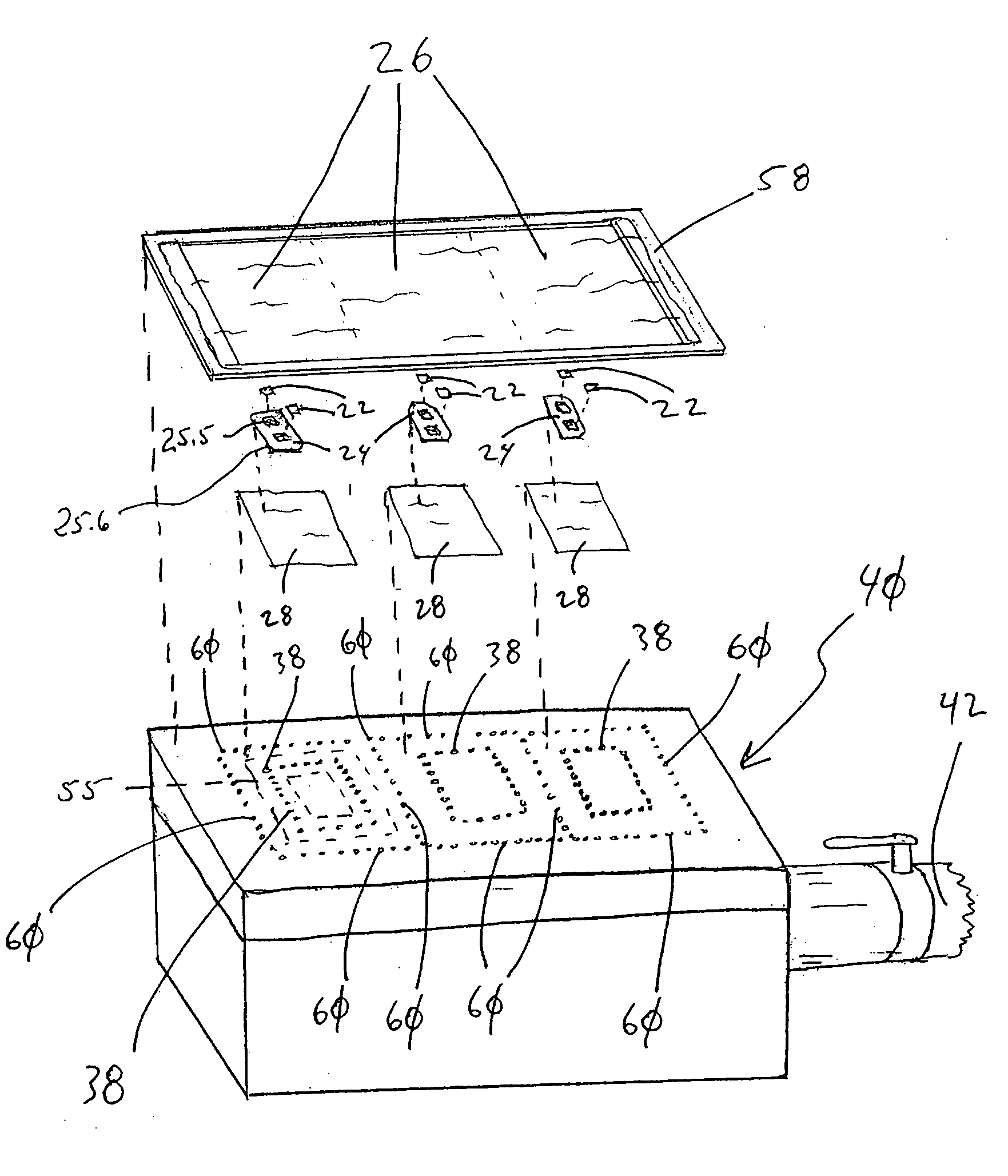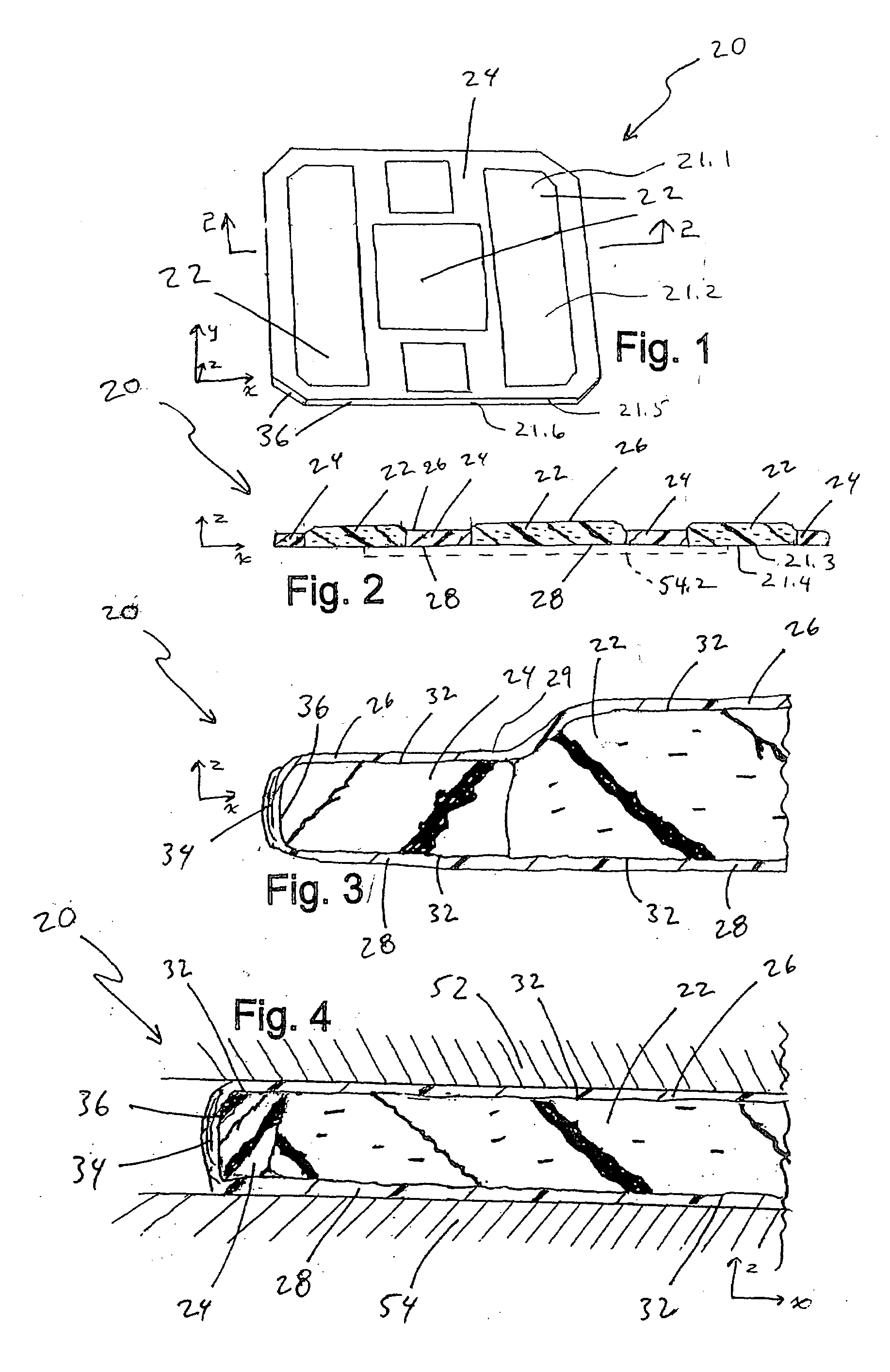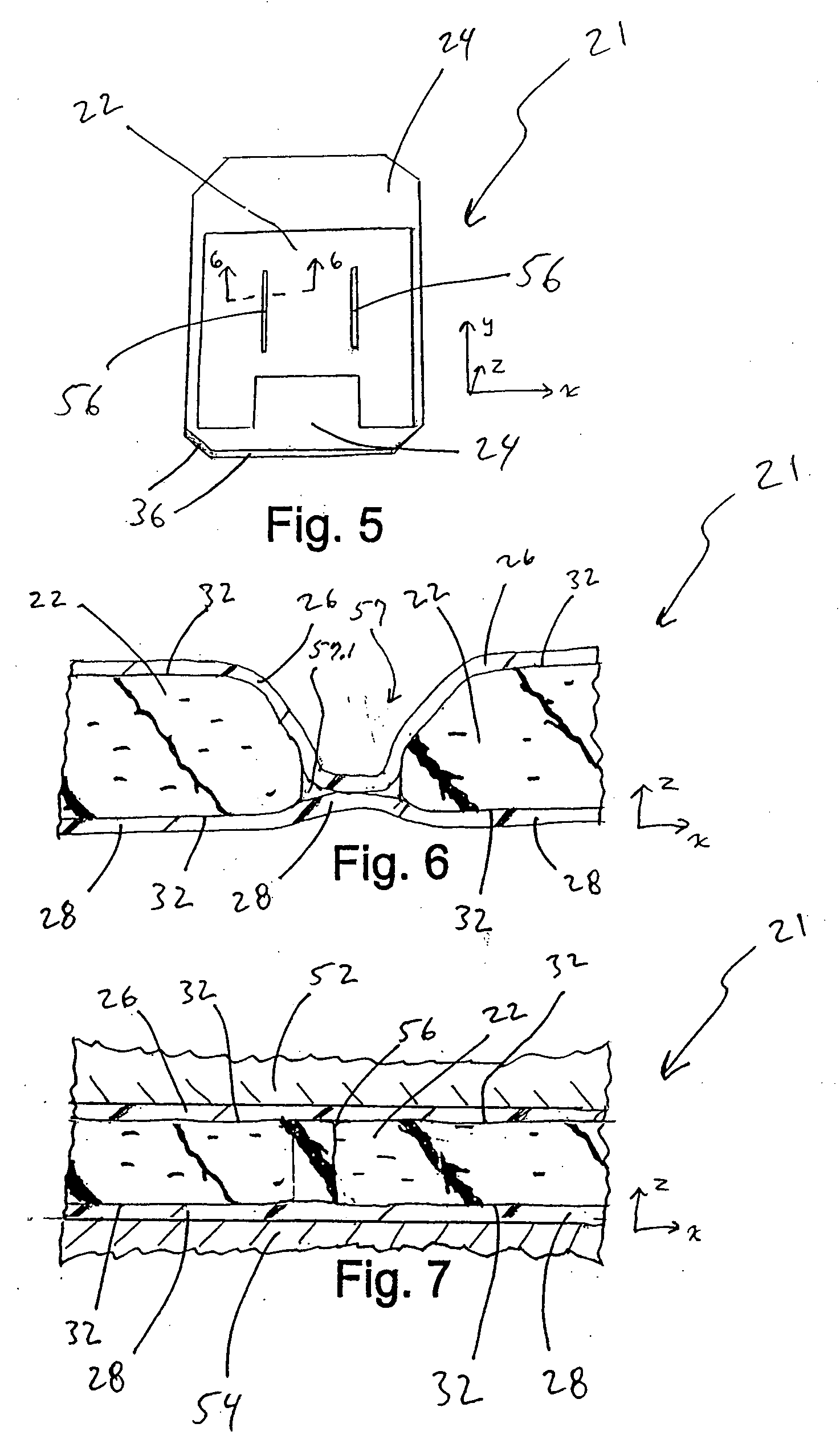Sealed thermal interface component
a technology of thermal interface and component, which is applied in the direction of electrical apparatus construction details, semiconductor/solid-state device details, lighting and heating apparatus, etc., can solve the problems of simple encapsulation of flowage materials, and achieve simple encapsulation of materials, excellent thermal transfer characteristics, and prevent the effect of encapsulation film ruptur
- Summary
- Abstract
- Description
- Claims
- Application Information
AI Technical Summary
Benefits of technology
Problems solved by technology
Method used
Image
Examples
Embodiment Construction
[0035]The present invention includes a heat-sealed thermal interface component for facilitating heat transfer between a heat source and a heat-sinking component. Referring to FIGS. 1, 2, 5, 6, and 13-16, different embodiments of the sealed thermal interface component 18, 19, 20, 21 are illustrated. The components generally have a top side 21.1 with a top surface 21.2, a bottom side 21.3 with a bottom surface 21.4, and a side 21.5 with a side surface 21.6. In preferred embodiments the component is a sheet configuration with a maximum thickness of about 0.03 inches to about 0.50 inches (in the z direction of the x-y-z coordinate system) and surface area (in the x and y plane) of about 2 square inches to about 36 square inches. More preferably, the component has a thickness of 0.06 to 0.16 inches. The component may have a thickness that varies slightly due to different thicknesses of the base components and compression that occurs during manufacture, specifically the partial evacuation...
PUM
| Property | Measurement | Unit |
|---|---|---|
| thickness | aaaaa | aaaaa |
| surface area | aaaaa | aaaaa |
| thickness | aaaaa | aaaaa |
Abstract
Description
Claims
Application Information
 Login to View More
Login to View More - R&D
- Intellectual Property
- Life Sciences
- Materials
- Tech Scout
- Unparalleled Data Quality
- Higher Quality Content
- 60% Fewer Hallucinations
Browse by: Latest US Patents, China's latest patents, Technical Efficacy Thesaurus, Application Domain, Technology Topic, Popular Technical Reports.
© 2025 PatSnap. All rights reserved.Legal|Privacy policy|Modern Slavery Act Transparency Statement|Sitemap|About US| Contact US: help@patsnap.com



